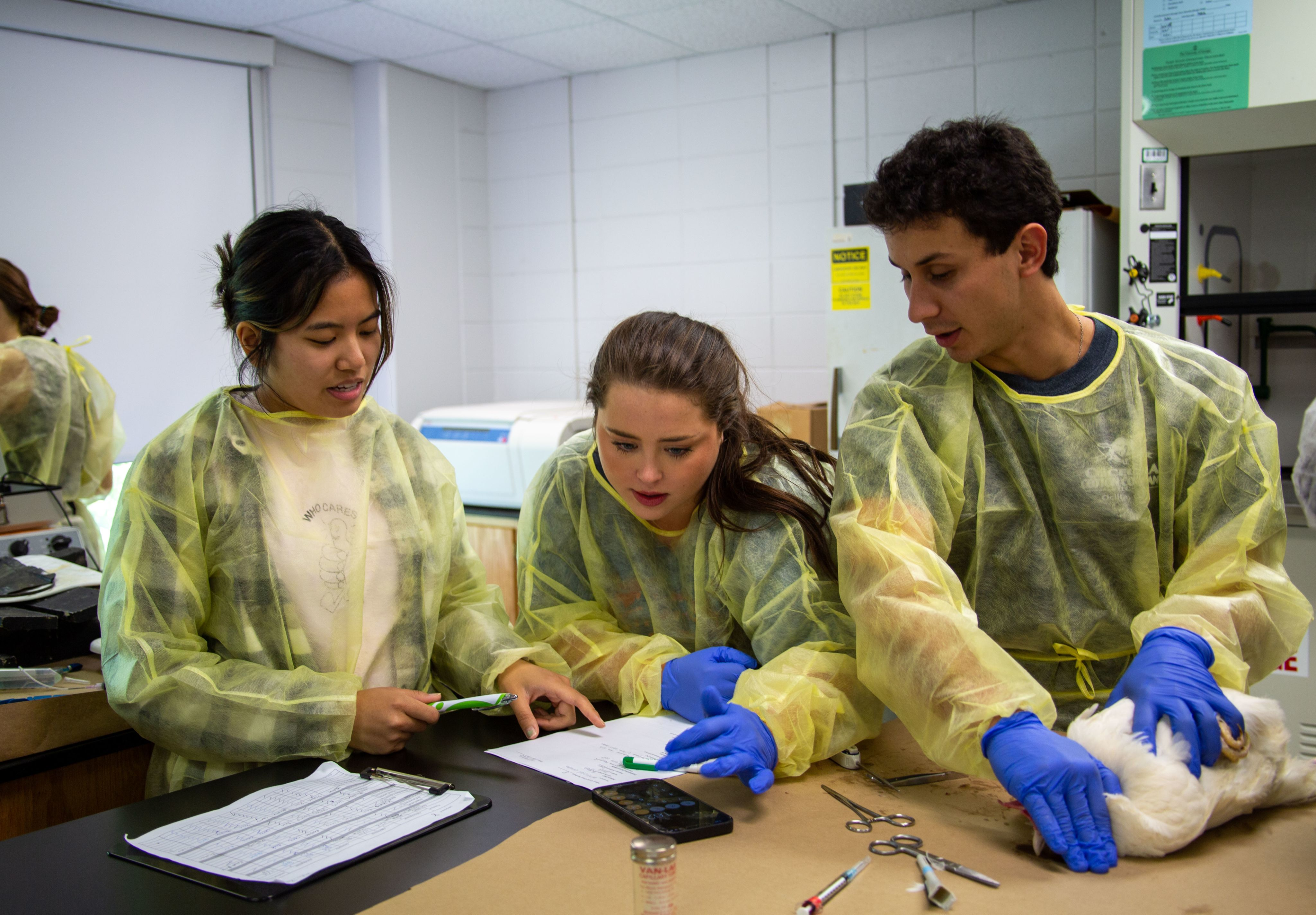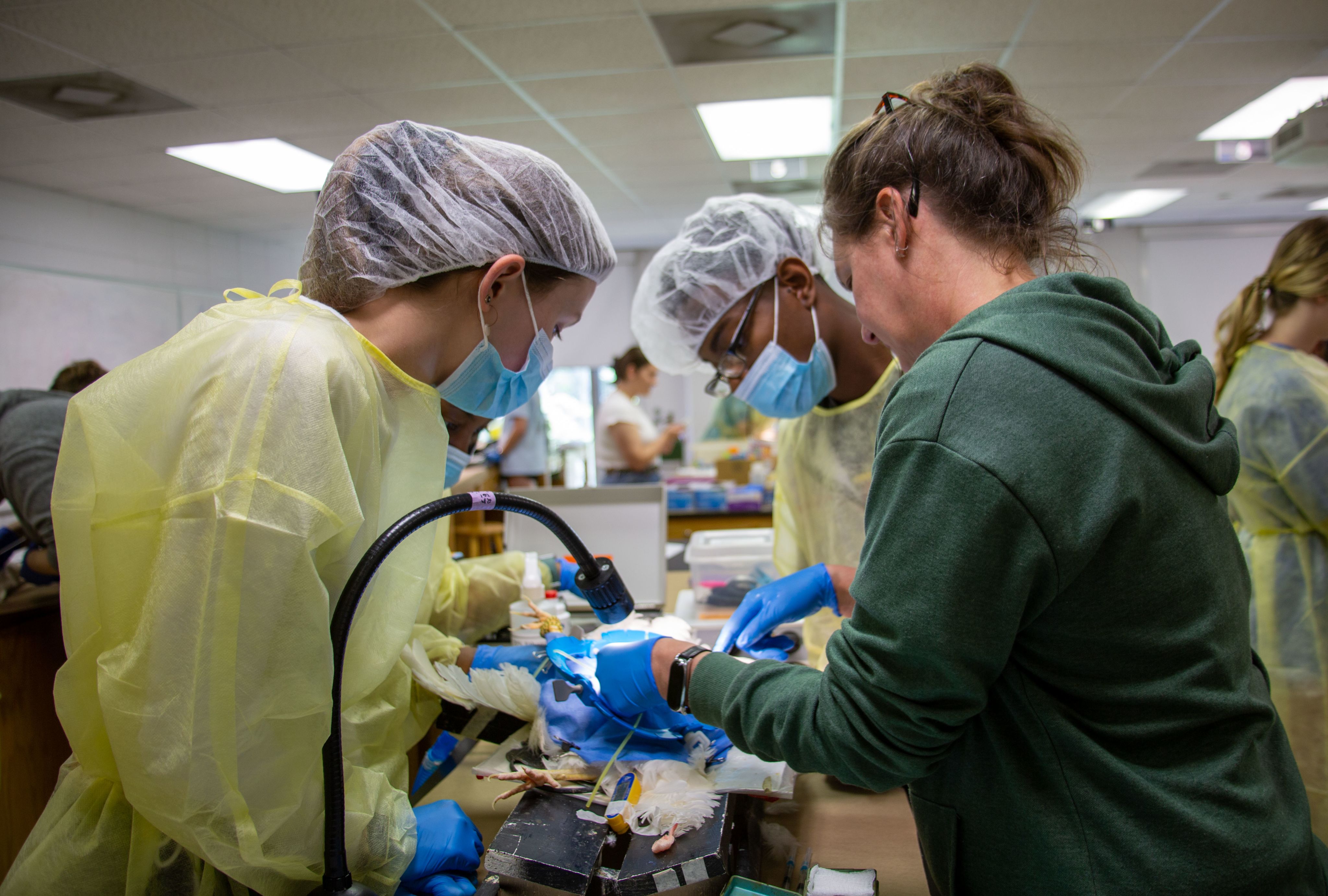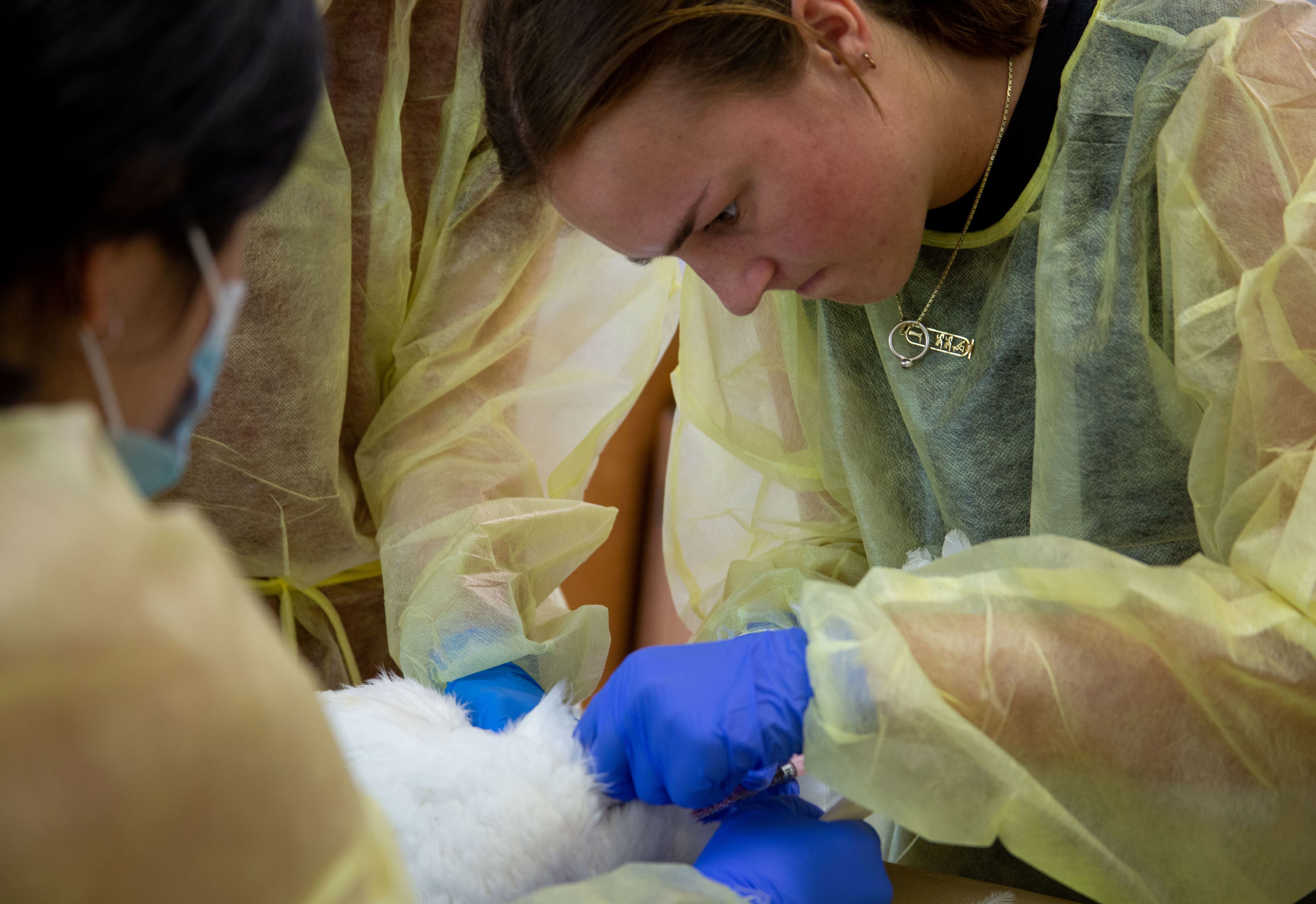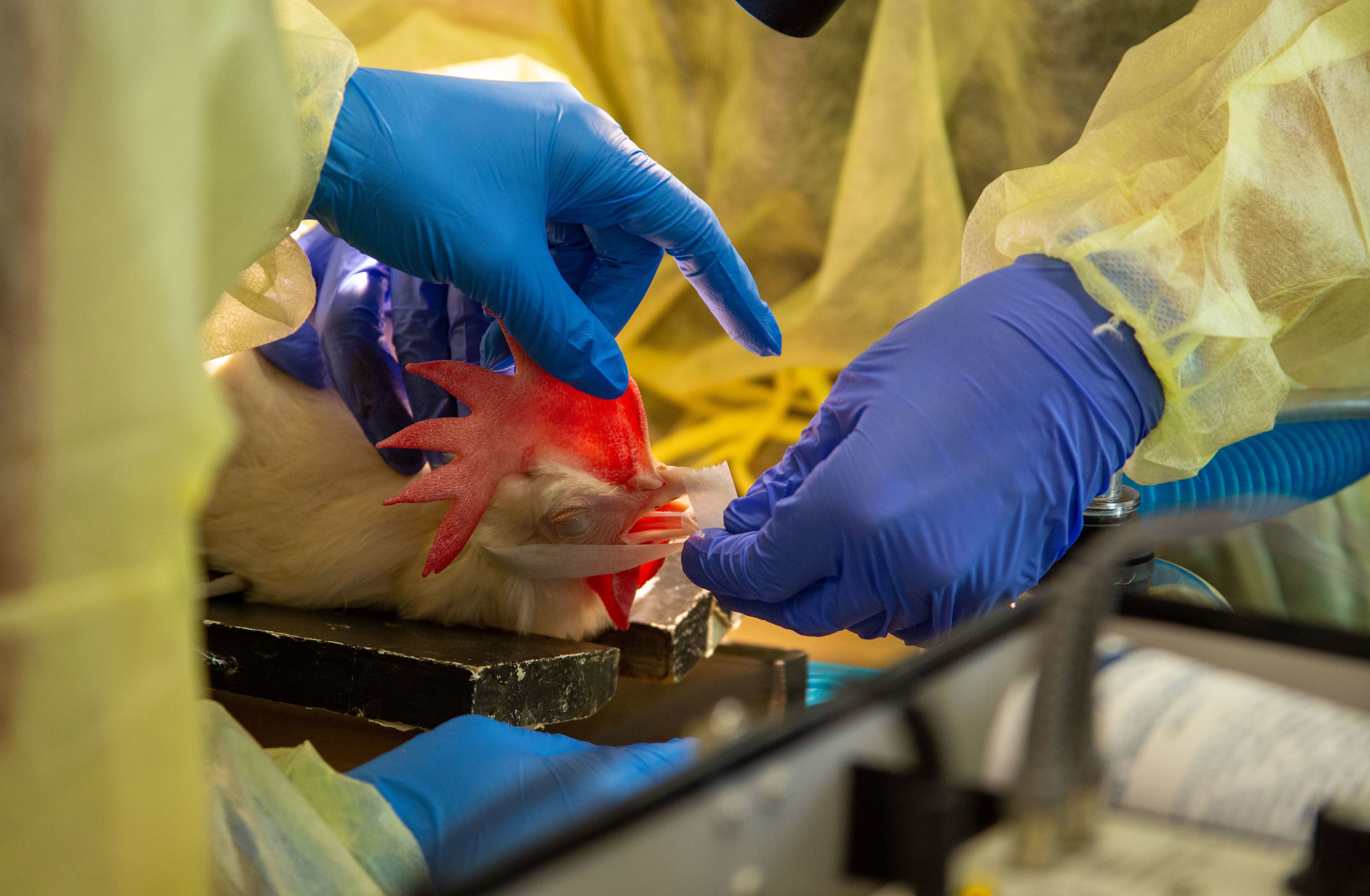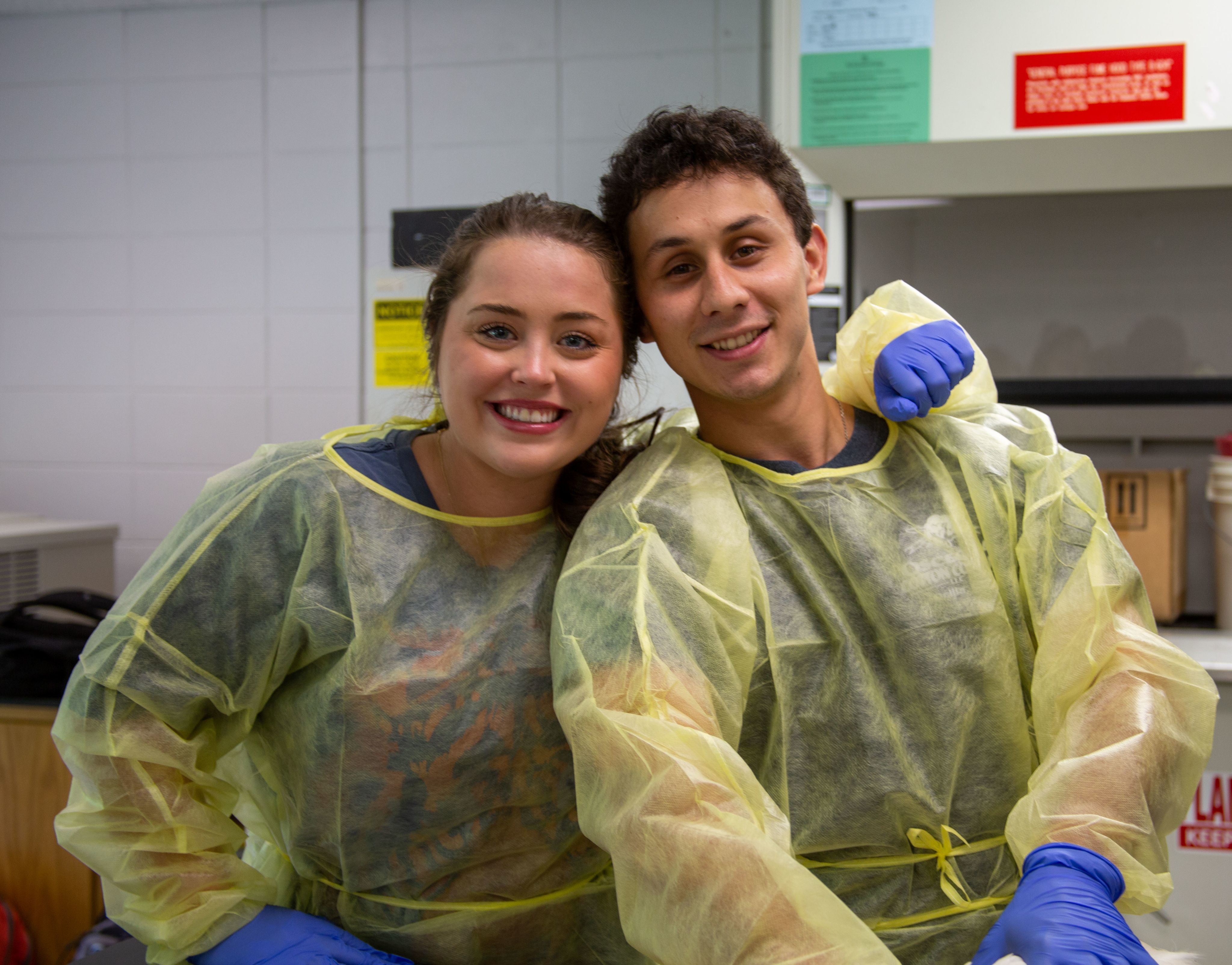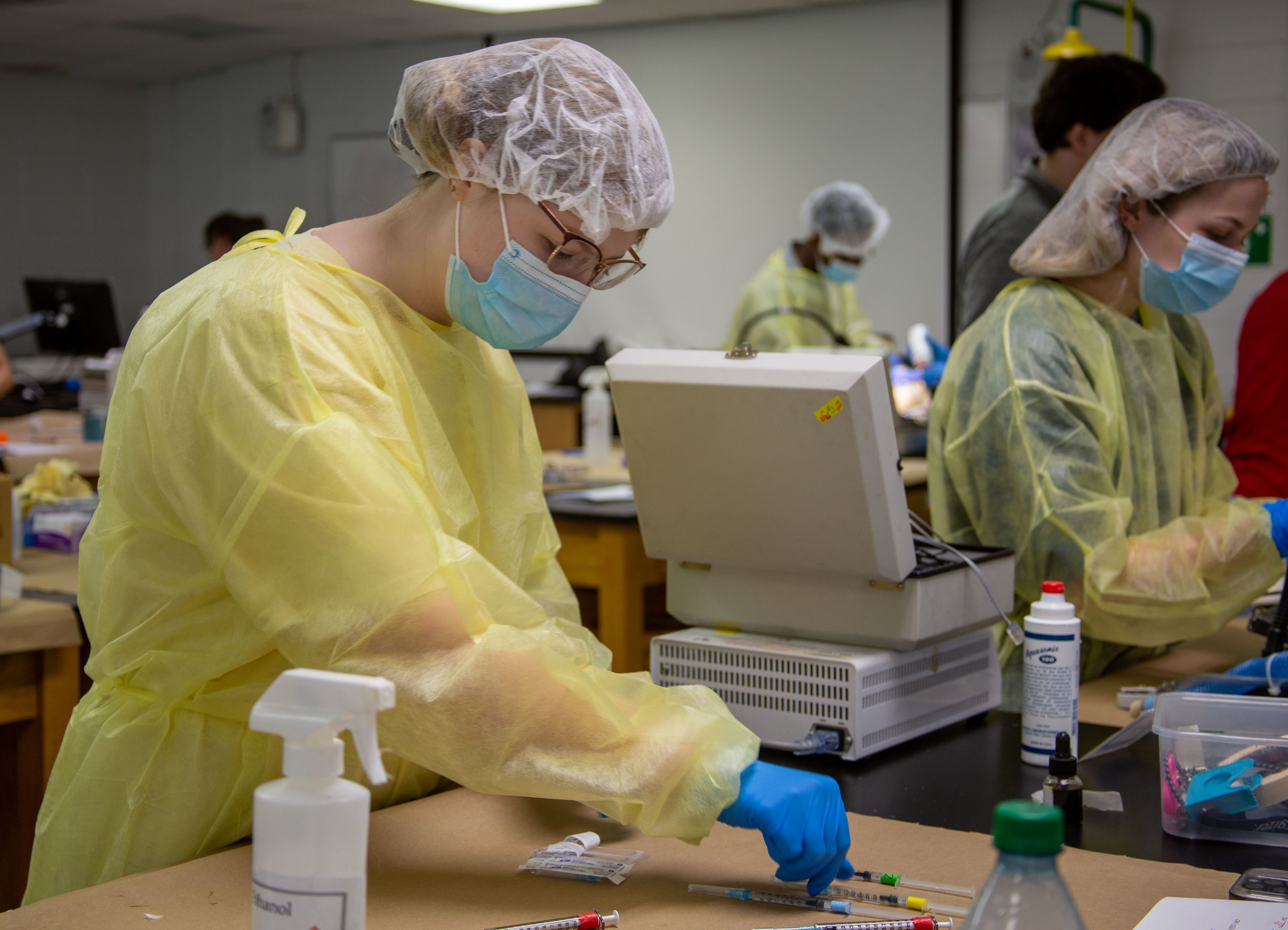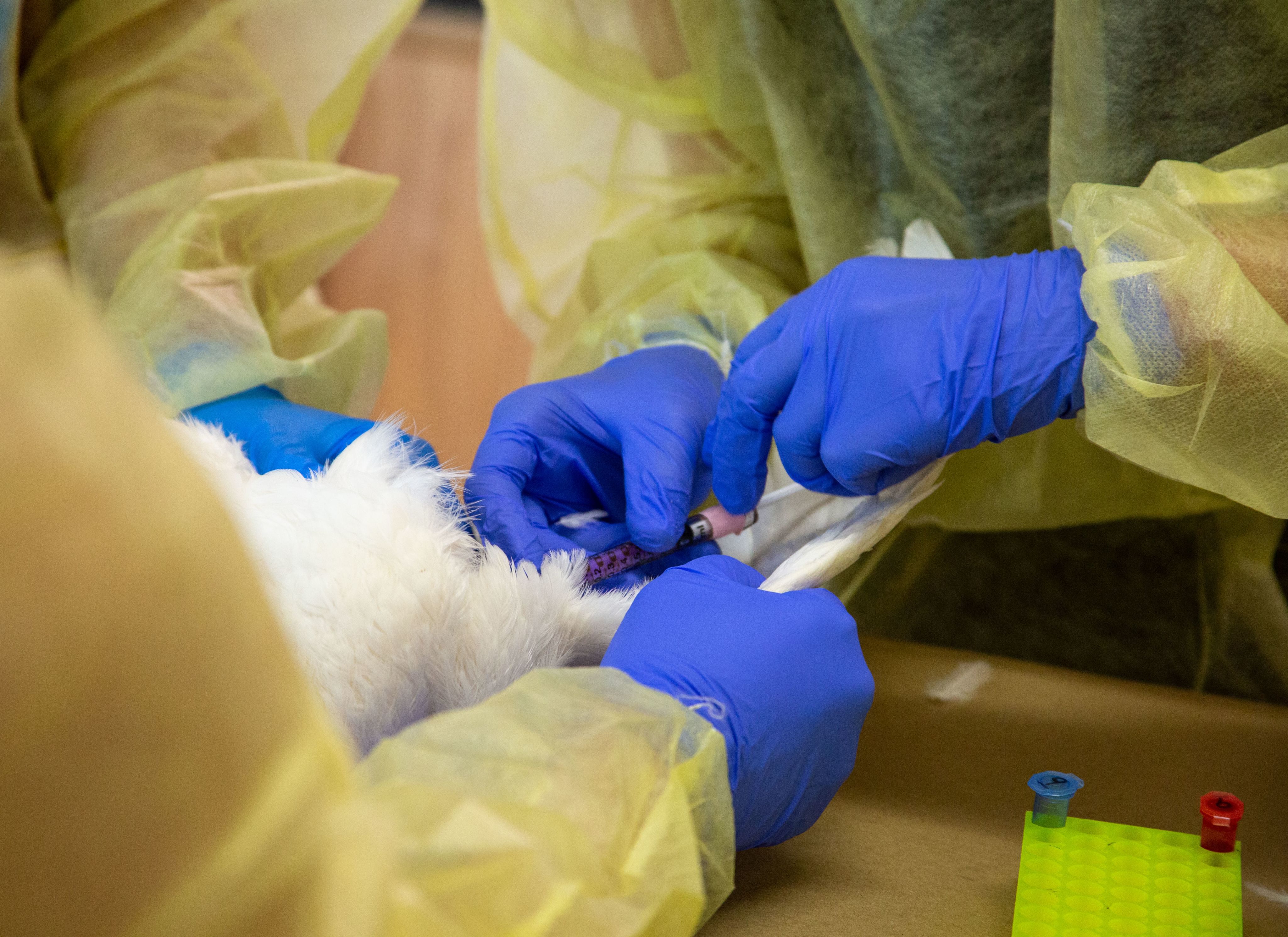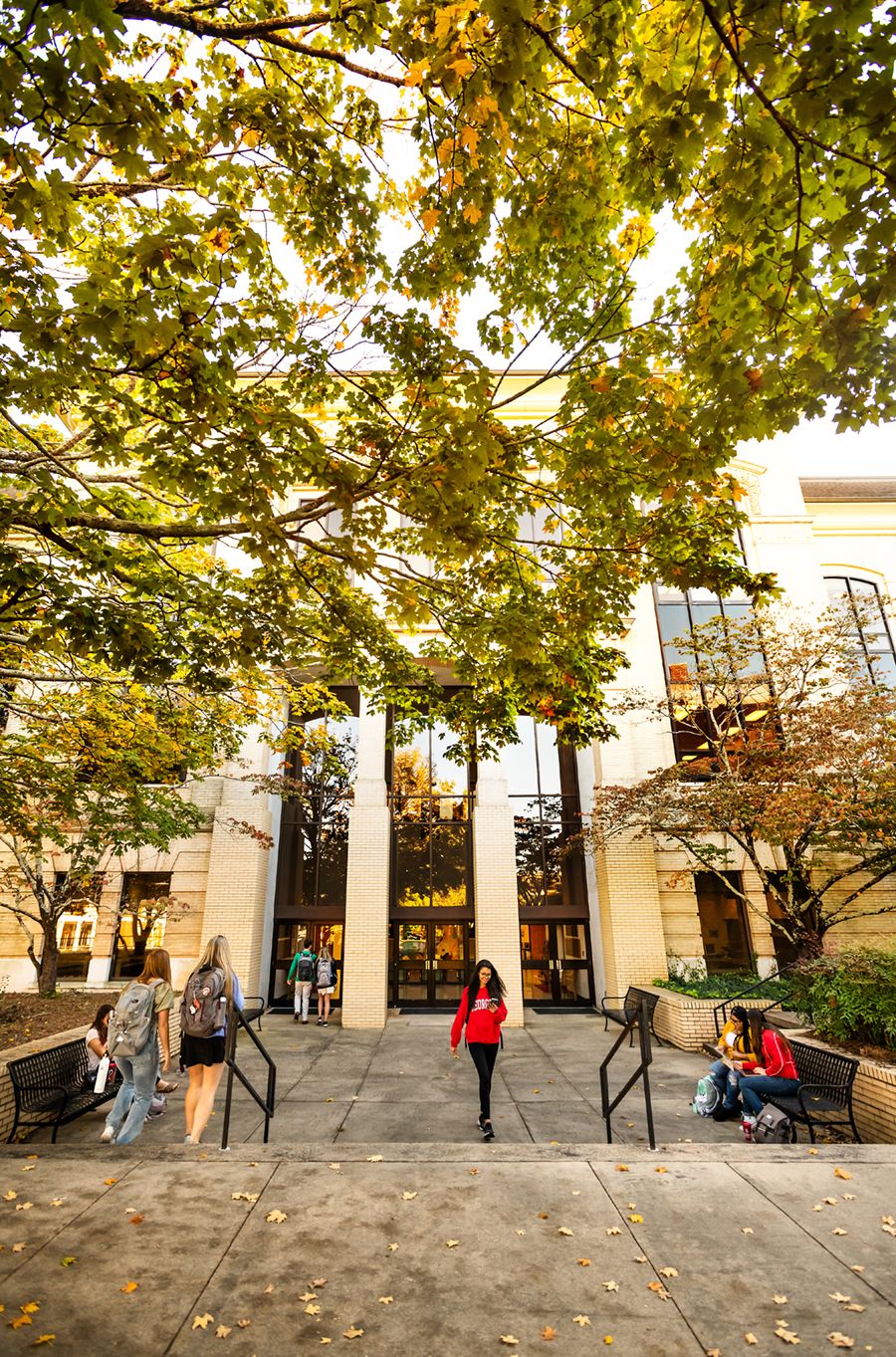Surgery from a bird's-eye view
Students gain real-life experience performing procedures and caring for patients in "Avian Surgical Techniques," a course offered by the CAES Department of Poultry Science.

Clustered around a surgical table, students carefully perform procedures on their patients, carefully monitoring every vital sign to ensure a successful outcome.
This may sound like a scene from a medical school or residency, but it describes the experiences of undergraduate students in “Avian Surgical Techniques,” a course offered by the University of Georgia’s College of Agricultural and Environmental Sciences. In the course, students have the unique opportunity to practice several surgical procedures and general care techniques on chickens.
The course is the only survival surgery course offered to undergraduates at UGA, meaning that the chickens are kept alive after the surgery concludes for post-operation monitoring and further examination. This helps students to learn surgical techniques as well as how to provide aftercare and monitor for signs that the surgery was successful.
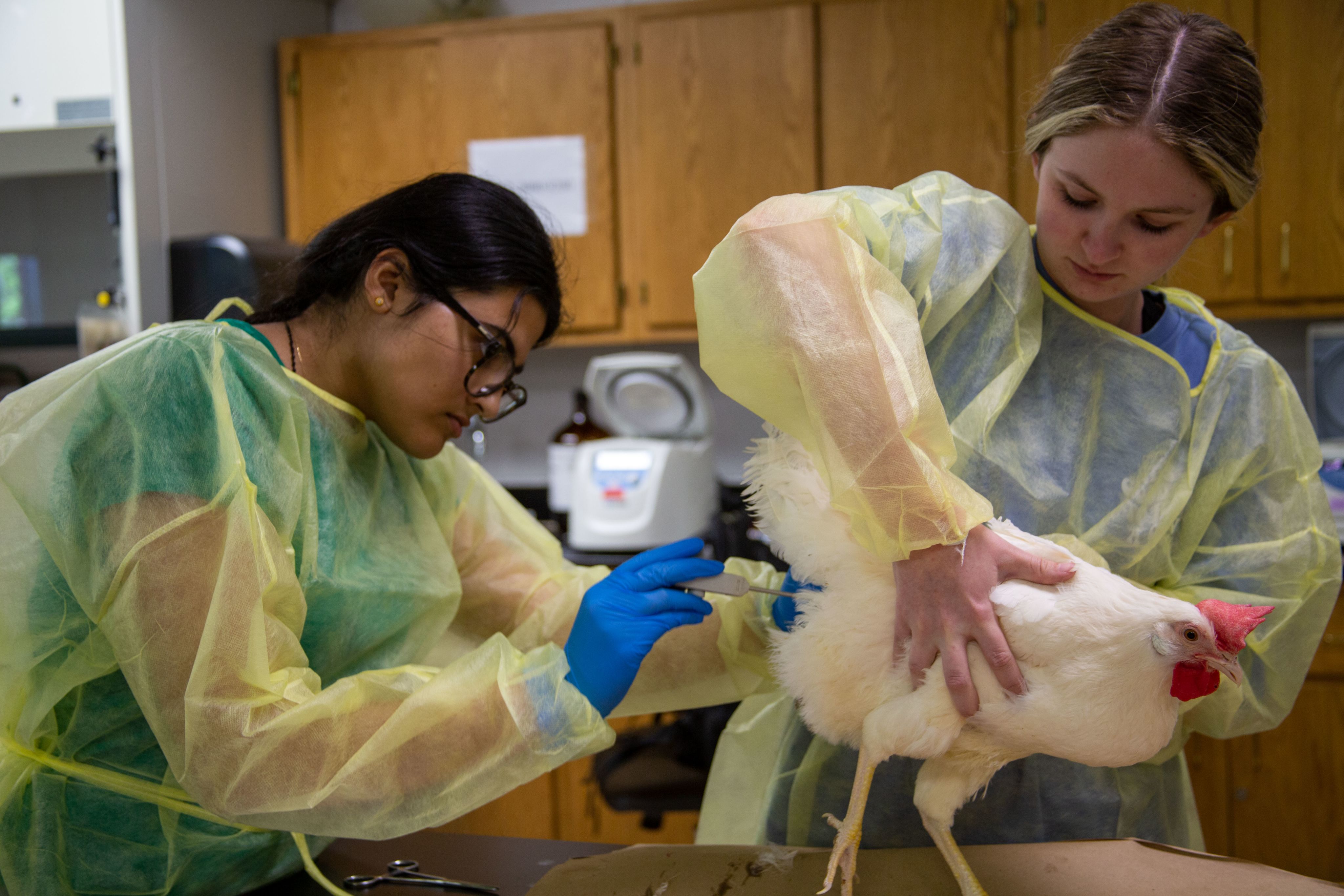


Under the guidance of poultry scientist Laura Ellestad and her undergraduate teaching assistants, students become well-versed in drawing blood, measuring out the correct dosage of medications and taking basic vitals over the course of the semester. Throughout the course, the students build their understanding of surgical techniques and proper procedures through a variety of exercises.
“It takes a while for the students to get here – we spend a lot of time talking about anatomy and blood and practicing the techniques, and they gradually build up to doing surgery,” said Ellestad. “But once they get to the surgery part of the lab and start to get the hang of it, it’s really impressive to see.”
Gut resections, artificial ovum placement and egg removal are a few of the surgeries students perform over the semester. Students learn the ins and outs of each surgery during the lecture portion of the course before performing each procedure twice.
Sanisa Foungthong, a pre-vet avian biology major and former student in the class, said she was impressed by the amount of hands-on experience she got. Now she serves as a teaching assistant for the course and helps current students through the procedures.
“There are very few opportunities to get experience like this, and it gave me a lot of really good practical skills for veterinary work — drawing blood, monitoring the chicken and doing the post-op work is really beneficial,” said Foungthong. “And not just for pre-vet, but also for pre-med and nursing students.”
Sanisa Foungthong, left, works with students as they go through the pre-operation routine and discuss medicine dosages.
Sanisa Foungthong, left, works with students as they go through the pre-operation routine and discuss medicine dosages.
The students work in teams, and each week they rotate through the role of surgeon, anesthesiologist and physician assistant to gain experience in different surgical roles. The surgeon performs the operation, the anesthesiologist monitors the chicken throughout the surgery, and the physician assistant takes notes and draws medicines. The teams stay the same each week so that students can build strong communication skills within their group.

“You build a strong team in this class, because you’re doing difficult procedures and have to communicate well to complete the surgery,” explained Foungthong.
Ellestad, an assistant professor in the Department of Poultry Science, came to UGA in 2017 and inherited the course in 2018. She decided to prioritize making the course larger, and the class is now offered in both fall and spring semesters. She also opened the class beyond avian biology majors to other UGA students, as many of the skills are relevant to students who want to go into human medicine.
Laura Ellestad, right, checks in on students as they perform an artificial ovum placement.
Laura Ellestad, right, checks in on students as they perform an artificial ovum placement.
Although it is an intense course, Ellestad gets great satisfaction from observing her students' progress and the confidence they gain from the first lab to the last.
“I love seeing that growth,” said Ellestad. “I count it as a good sign of success in that they become very independent and capable over the timeline of the course.”
Interested in becoming a CAES student?
Schedule a campus visit and learn more about the admissions process today.
CAES students work alongside world-class scientists to get hands-on experience in their field. Through scholarship opportunities, small class sizes and faculty support, CAES students are empowered to become the next generation of leaders.


